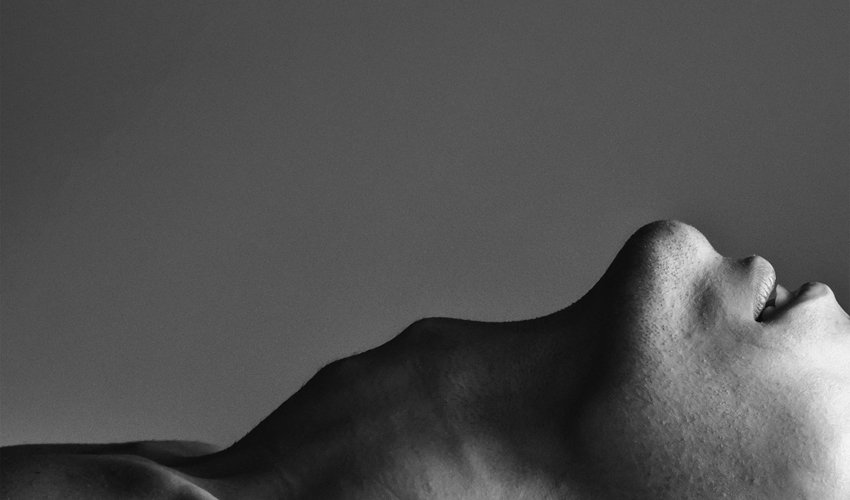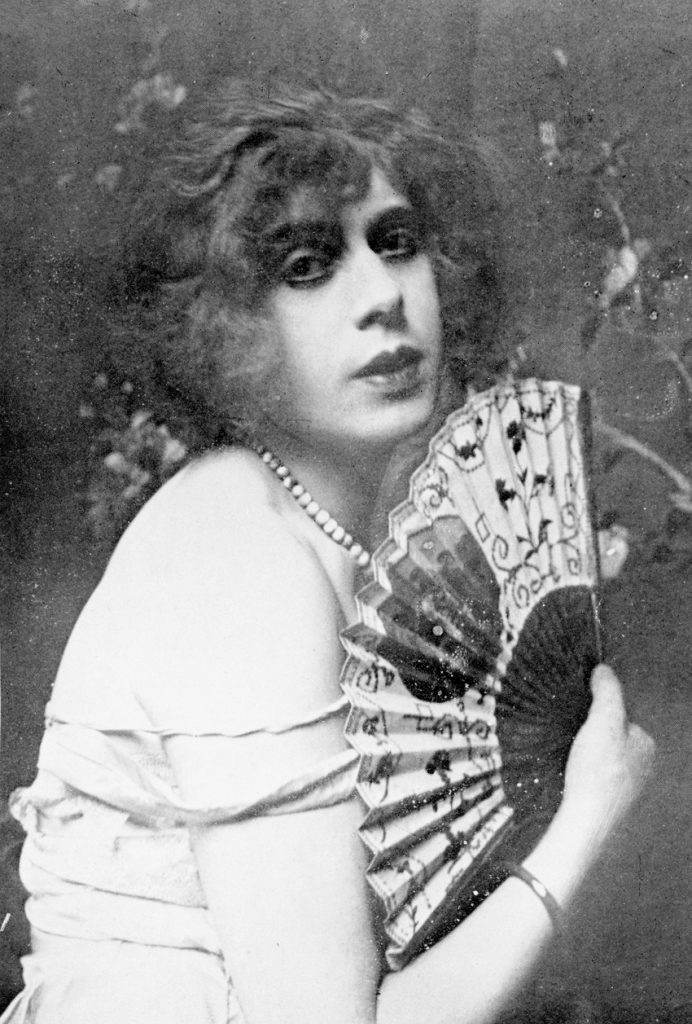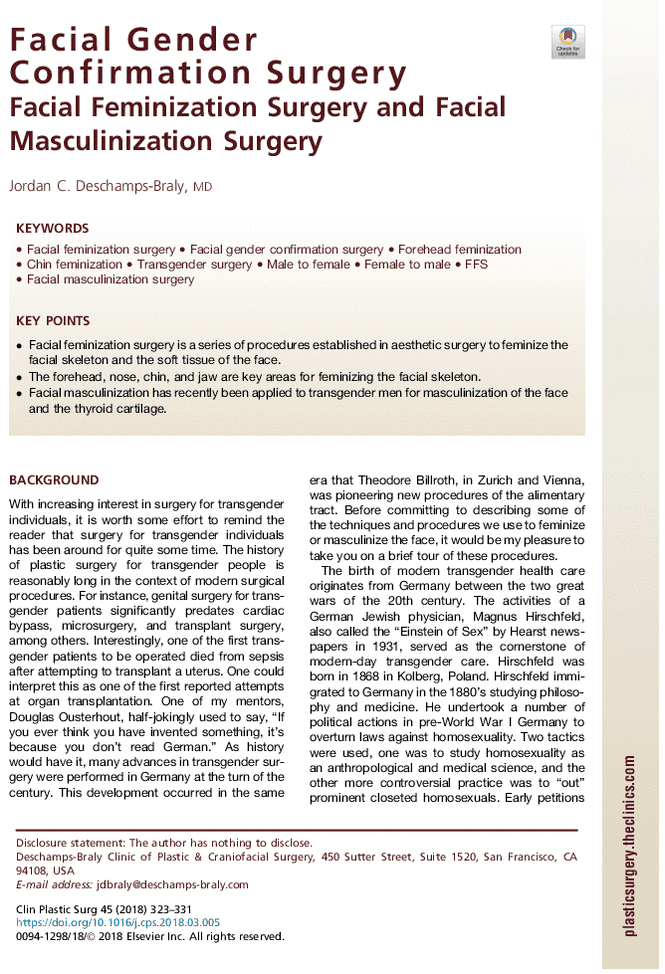
Facial Feminization Surgery – A Complete Guide to FFS
Everything You Need to Know about FFS
Facial feminization surgery (FFS) includes a series of plastic and craniofacial surgical procedures designed to feminize the face. FFS is ideal for trans women and non-transgender women who want a more feminine facial appearance. These surgeries can reduce the size and shape of the forehead, alter and refine the nose, make the lips fuller and the cheeks rounder, decrease the chin’s size and shape and shave the Adam’s apple, among other effects.
For transgender women, FFS procedures can significantly decrease the often harmful effects of gender dysphoria. Not ‘passing’ as your true gender can have devastating and damaging life-long effects. Matching an individual’s ‘outside’ with their internal sense of self can provide immense relief from the suffering and distress of living in a world that views you as something other than who you are.
Facial feminization can also have noticeable effects on how you are perceived, and how you interact with others in society. After all, first impressions are often based on appearance, including facial harmony and beauty. FFS can make it possible for you to be more consistently identified as a woman, and as a result, you can become more relaxed in relating to others as your true gender.
After facial feminization, many of our patients make comments such as: “I no longer fear looking at my face in the mirror when I get out of bed each morning.” Instead, the vision of one’s face glimpsed in a mirror is a source of self-confidence and joy.
Facial feminization can contribute to life-changing improvements, including an increased sense of self-worth and self-esteem, according to recent research. These surgeries can also have a beneficial impact on an individual’s personal and professional life.
What follows is a succinct overview of each surgical procedure that falls within the scope of facial feminization. We also discuss the history of gender confirmation surgery, and frequently asked questions about FFS.
CONTENTS:
Procedures:
- Forehead Reduction and Contouring
- Scalp Advancement (Hairline Lowering)
- Brow Lift (Browplasty)
- Rhinoplasty (Nasal Surgery)
- Cheek Enhancement (Augmentation & Reduction)
- Earlobe Reduction
- Lip Lift and Lip Filling
- Chin Recontouring (Genioplasty)
- Jaw Contouring (Reshaping or Tapering)
- Adam’s Apple Reduction (Tracheal Shave)
- Facelifts and Facial Feminization
- Ethno-Specific Facial Feminization
++++• Feminization of The Asian Face
++++• Feminization of the African American Face
History:
Frequently Asked Questions:

1. Forehead Reduction (Contouring & Reshaping)
The forehead dominates approximately one-third of the human face. So, it is a crucial area for facial feminization. The forehead and the brow are significant indicators of gender, since their characteristics vary greatly between males and females. Reducing the size and shape of the forehead might be the single most notable procedure for feminization of the face.
Forehead reduction and contouring, especially when performed in conjunction with a hairline lowering procedure, results in a more naturally feminine appearance. Existing facial bone asymmetries can also be remedied at the same time, resulting in increased facial symmetry and aesthetic harmony.
The procedure involves reshaping the forehead and the bones around the eye sockets. This reduces the large bony ridge of a masculine-looking forehead and the eyes become more pronounced, noticeable and feminine. The changes in these traits can have a profound effect on your overall gender appearance.
Although the procedure varies by patient, an incision is made in every case at, or above the hairline, depending upon the final hairline positioning. The brow bone is osteotomized or cut and reconstructed, and the orbital bones around the eye sockets are reshaped. The frontal bone between the eye sockets is removed, reduced as needed, and reattached. At the same time, it is not unusual to perform other surgeries, such as hairline restoration, in order to take advantage of the incisions made during a forehead procedure.
2. Scalp Advancement (Hairline Lowering)
The height of a forehead and how the face is framed by the hair makes a real difference in whether you are identified as male or female. Female faces typically are recognized as having “smaller” characteristics, and this is largely because the female hairline is situated lower on the forehead.
Scalp advancement surgery brings the scalp and its hair follicles lower down on the forehead. The procedure consists of making a trichophytic incision along the forehead where the hairline is desired, and then pulling the entire scalp forward. This movement brings the hairline into what is perceived as a typical hairline height and shape for a woman. By using a trichophytic incision, the hair follicles can be buried underneath the skin closure at the end of the surgery, so that hair will grow through the scar and in front of the hairline.
Hairline lowering is usually completed together with a larger group of complementary feminization procedures as part of a long-format surgery. It is also a common procedure for cisgendered women with receding hairlines.

3. Brow Lift (Browplasty)
Not all brows need to be lifted. In fact, some just need to be shaped into a more feminine and aesthetic form. Depending on the existing facial features, the brows may naturally elevate to a higher position as they age. For an aesthetically pleasing brow, the shape and position of the “tail” of the brow is actually more important than its overall height. With aging, the facial volume in our temple area decreases. This loss can be significantly improved by restoring volume with a natural filler such as the patient’s own body fat via a fat transfer procedure.
Brow lift surgery is performed under general anesthesia usually via an “open” approach during a long-format facial feminization surgery session. Although endoscopic brow techniques are common, better results can be achieved with an open approach, because it allows for better control of the final result. Regardless of the surgical technique, an incision is made in the hairline or in front of the hairline, which leaves little to no visible scarring. Typically, during a brow lift the corrugator muscle (a small muscle near the eye) is severed, which eliminates the future need for Botox®. It also permanently alleviates vertical wrinkling between the eyebrows.
A brow lift may also be performed at the same time as a hairline restoration, rhinoplasty, or forehead reduction/contouring.

4. Rhinoplasty (Nasal Surgery)
Rhinoplasty reduces the size of the nose, and alters its shape and profile to make it appear more feminine. This result is achieved by narrowing and/or altering the nose internally, and/or reshaping and moving the nasal cartilage.
The biggest challenge with feminizing the male nose is to ensure that it retains aesthetic harmony with all other existing or newly feminized facial features. It is critical that the “new nose” is aesthetically in balance with the rest of the facial structure.
The art of rhinoplasty surgery is an extremely delicate process — regardless of gender — and it is also one of the most difficult plastic surgery procedures to undertake successfully.
Rhinoplasty is almost always performed at the same time as forehead feminization and hairline lowering to ensure that the end result is aesthetically balanced.
5. Cheek Enhancement (Augmentation)
The cheeks are a significant aspect of the feminine face. If you feel that your cheeks are too masculine, cheek enhancement via augmentation works to give the cheeks a rounder and smoother feminine appearance. Some patients may prefer higher, more prominent cheekbones, while reducing excessive fullness or “chubby” cheeks.
Cheek augmentation is typically performed with non-surgical fat transfer or fat grafting. This procedure involves fatty tissue being removed from another part of the patient’s body (usually the inner thigh) and injected into the cheeks. Injection of the fat causes the cells within it to mobilize, and thus, use of fat grafts can improve circulation and rejuvenate tissue. We’ve seen marked improvements in the quality and texture of patient skin after fat grafting that is apparent by six months after surgery.
6. Earlobe Reduction
Earlobe surgery feminization is often performed in conjunction with a series of other facial gender confirmation procedures. Earlobes may be reduced, reshaped, and cartilage may be sculpted to modify the overall contours of the ear. Feminizing an earlobe can be achieved by reducing and reshaping a larger and longer ear. The earlobe, or the peripheral lobule, is trimmed and reshaped as desired for a more feminine look. The single most important step in feminizing an ear is crafting a smooth and natural interior lobe border.
The cartilage of the ears continues to grow throughout our lifetime. Gravity over time also causes earlobes to sag, stretch, and enlarge, creating pendulous earlobes, a condition commonly called “megalobe” — which may not look feminine, or aesthetically pleasing.
7. Lip Lift and Reshaping
Feminization of the lips may include several procedures depending on patient features, age, or desired outcome. Lip feminization is often performed as a part of a larger facial feminization surgical process. The most typical lip FFS procedures include:
- Upper lip lift (upper lip reduction) lifts the upper lip to a more feminine and “open” position to improve the visibility of upper teeth. A lip lift makes the lips – and the entire face – look more feminine by shortening the upper lip, improving the visibility of the upper teeth, and creating a more youthful appearance.
- Lip Augmentation (Lip Filling) fills the lips so they appear fuller, “plumper” and more feminine. Lip augmentation may be done either through the use of injectable fillers or fat transfer injections.
- Corners-of-Mouth Lift: Often less of the red part of the lips shows near the corners of the mouth in men. A corners-of-mouth lift is done to improve the natural “sweep” of the lips and increase the visibility of the red portion. This procedure does not affect lip movement, which is necessary for the expression of a full range of emotions.

8. Chin Recontouring (Genioplasty)
Chin re-contouring (genioplasty/mentoplasty) reduces the shape of a large or prominent chin — when a more feminine look is desired. This procedure is intended to impart a natural balance by reducing and reshaping the chin to be smaller, less angular, with a smoother and more feminine aesthetic. Also, any existing congenital asymmetries can be eliminated to increase symmetry and create an aesthetically pleasing appearance.
Chin implants are typically not used in this type of operation. In fact, it is impossible to feminize a chin with just an implant because any implant will invariably have the effect of actually enlarging the chin — the exact opposite outcome of the goals of feminization. Chin implants also can cause potential problems, such as infection due to rejection, shifting of the implant later, and/or possible damage to the roots of the teeth or nerves that give your lips sensation.
Another method that is commonly employed for chin contouring is a T-osteotomy, which involves cutting and removing a T-shaped piece of bone, and then fusing the remaining bones of the chin together. It is almost impossible to correct both a square jaw and produce a slender “V-Line” shape to the chin — simultaneously — without using this technique for chin recontouring.
9. Jaw Contouring (Reshaping or Tapering)
Jaw contouring (also known as jaw tapering or jaw reduction) is used to modify and feminize prominent male jawlines. The back “corner” of the male jaw can also be reshaped to be rounder and smoother. Bone can be shaved off along the lower edge of the jaw and chewing muscles reduced (see: Masseter Muscle Reduction) to make the jawline appear narrower.
Jaw contouring works to narrow the overall width and shape of the face, subtly refine jawline angles, and improve the overall proportions of facial features so that the face appears more feminine. Individuals with asymmetrical or lopsided-appearing faces also benefit from this procedure. The results will look natural and provide balance and harmony to facial proportions, as well as making the face appear more feminine.

10. Adam’s Apple Reduction (Tracheal Shave)
The size of the Adam’s apple can be reduced significantly with a surgical procedure known as a tracheal shave, thyroid cartilage reduction, or Adam’s apple reduction. It involves literally reducing or shaving the thyroid cartilage down to decrease the size of the Adam’s apple. This procedures makes the neck and throat appear more feminine, and helps fulfill the goals of facial gender confirmation.
Typically, the procedure involves an incision in the throat just under the chin. The vertical muscles of the throat are then separated to expose the Adam’s apple and the tracheal cartilage is shaved to reduce its size.
Incisions should not be made on the front surface of the throat where it is very visible. This may also result in a very undesirable outcome: the scar can stick to the cartilage underneath, and move up and down when the patient speaks or swallows.
11. Facelifts and Facial Feminization
A facelift (rhytidectomy) is a surgical procedure designed to reduce the effects of aging in the facial and neck areas. The procedure is used to tighten sagging skin, reduce lines and wrinkles, and eliminate jowls and excess fat.
To achieve the best outcomes, a facelift should not be attempted until six months after the completion of any facial feminization procedures. Also, any weight loss plans should be completed before any facelift procedures are undertaken.
The most commonly used facelift procedure after feminization surgery is usually the surgery known as the deep plane facelift or SMAS (Superficial Muscular Aponeurotic System). In this facelift, the surgeon works with the deep, underlying layer of facial muscle and fibrous tissue under your skin. Modern facelifts work on a much deeper, structural level than in years past, and literally lift the underlying facial structures for a more natural-looking, longer-lasting result.
In most people, the neck will show signs of aging even before the face, so a neck lift may be recommended in tandem with a facelift. Undertaking both of these procedures at the same time enhances the positive results and ensures facial aesthetic harmony. However, depending on your age, a full surgical neck lift may not actually be necessary, and you may also want to explore non-surgical options such as Botox® or Dysport® injections for a rejuvenated and youthful appearance.
12. Ethno-Specific Facial Feminization Surgery
Facial feminization procedures will often vary in patients of different ethnicities.
Individuals of Asian and African descent need key modifications of the procedures typically performed on individuals of a Caucasian background.

Feminization of The Asian Face
First and foremost, the shape and size of the forehead and the brow should be the main focus of feminization for those of Asian background. Forehead feminization typically includes reduction and contouring to create a smoother, rounder, more feminine forehead.
Also, a brow lift and/or brow shaping procedure works to reduce the distinctly “heavy” Asian male brow bossing and “opens up” the eyes to create a more feminine and rejuvenated appearance.
There are several key differences that need to be taken into consideration with facial feminization of an Asian forehead. For example, a Chinese female forehead will typically project significantly less than a Caucasian female. However, a Japanese forehead is evenly positioned “behind” the eyeball, with no overhang above the eye.
The hairline position on the forehead will also be a little different depending on the specific Asian background. When undertaking hairline lowering on Chinese and Koreans, it is important to allow for the slightly higher hairlines of these individuals before facial feminization. So the hairline will not be lowered as significantly in these patients as it might be for people of European background.
When it comes to feminizing the lower face, the most common procedure for those of Asian background is the “Asian V-line” jaw reduction surgery. This procedure is important, because Korean, Japanese, and Chinese males (and females) will typically have much heavier and wider-set jaws. Asian V-line surgery is very popular all throughout Asia for both men and women.
Feminization of the nose is also quite different for those of Asian ethnicity. Most Asian FFS patients will seek to augment their nose to make it larger. This may seem counterintuitive in terms of feminization, because typically the male nose is reduced in order to feminize it. However, in some cases, a rhinoplasty will include augmentation to ensure that the nose maintains a natural aesthetic balance with other newly feminized facial features.

Feminization of The African-American Face
The shape and size of the forehead and the brow should be the main focus of facial gender confirmation for those of African-American heritage. Typically the forehead will project a little further outwards than that of a person of Asian descent, but not as far as that of a person of European descent.
Forehead feminization for African Americans typically includes forehead reduction and contouring to create a smoother, rounder and more feminine shape. Also, a brow lift and/or brow shaping procedure is recommended to reduce the distinctly “heavy” African-American male brow bossing. This procedure “opens up” the eyes to create a more feminine appearance.
The hairline position on the forehead will also be different because African-American women tend to have naturally higher hairlines than European women. Thus when lowering the hairline it is important to make allowance for the fact that African- American women have slightly higher hairlines to begin with, so the hairline may not be lowered as significantly as with others. Ultimately, the best results are attained by ensuring that the newly feminized facial features are aesthetically in balance and have a natural look.
Typically, gender confirmation of the nose via rhinoplasty is recommended for most FFS patients. Often, African-American transgender patients seek a narrower, more streamlined female nose. However, it is important that the nose maintains a size and shape that is in harmony with its natural African-American facial features.
Jaw surgery is also advised because the male African-American jawline is usually quite broad and angular – often wider and squarer than what is seen in other ethnicities. The jaw will often need to be narrowed and softened via jaw contouring or reshaping.

Lili Elbe 1926. Image source: Wikipedia
History of Facial Feminization & Gender Confirmation Surgery
The Beginnings Of Facial Feminization & Gender Confirmation Surgery
Prior to the advent of gender confirmation and facial feminization surgery, individuals with gender dysphoria had no viable medical or surgical options. They could “dress to pass” as the gender they identified with, but were still often seen by the world at large as their assigned gender at birth. Transgender individuals often lived with a deep sense of dissatisfaction and felt uncomfortable in their own skin — physically, emotionally and psychologically.
+++
- 1906: The Very First Known Case Of Gender Confirmation Surgery. In 1906, Karl “Martha” Baer attempted suicide by stepping in front of a streetcar in Berlin after his affair with a married woman was discovered. Baer was presenting himself as male, despite papers identifying him as female.
- 1907: Dr. Magnus Hirschfeld was consulted, and in 1907 Baer underwent a surgical procedure to masculinize his intersex genitals — likely via metoidioplasty. Assigned female at birth, he became one of the first people to undergo gender confirmation surgery in December of 1906. He also consequently became the first female-to-male (FTM) transgender individual. In January 1907, he was the first transgender person to gain full legal recognition when he had a new birth certificate issued that identified him as male.
- 1922-1969: The Early, Experimental Years: The origins of gender confirmation surgery can be traced back to the early 20th century when gender-related surgery was experimental and rare. One of the first identifiable recipients of gender confirmation surgery was Rudolph “Dorchen” (Little Dora) Richter, who had an orchiectomy in 1922 by her own request. The surgery took place at the Institut für Sexualwissenschaft (Institute for Sexual Science), founded by Dr. Magnus Hirschfeld in Berlin. Then later in 1930, Richter underwent penectomy by Dr. Levy-Lenz and vaginal reconstruction by Dr. Erwin Gohrbrandt. Dr. Hirschfeld was called the “Einstein of Sex” by a Hearst newspaper in 1931, and he pioneered modern day transgender healthcare. He and the institute he founded were a source of empathy for a population scorned by society. The Institute became a mecca for the study of sexology, and housed a museum for the education of the public. People from around the world visited the Institute to gain greater understanding of homosexuality and transgender people.
- 1930: Lili Elbe, a Danish transgender woman, was the next known case; her story was told in the 2015 film The Danish Girl. The first surgery (removal of the testicles) was made under the supervision of sexologist Dr. Magnus Hirschfeld in Berlin. The rest of her surgeries were carried out by Dr. Kurt Warnekros, a doctor at the Dresden Municipal Women’s Clinic.
- The 1950s: During the 1950s, transgender women benefited from newly available female sex hormone therapy. One of the pioneers in this field was the German-born psychiatrist and sexologist, Dr. Harry Benjamin, a peer of Dr. Hirschfield during the early 20th century in Germany. After immigrating to the United States, Dr. Benjamin became known internationally for his efforts to advance the field of non-surgical care for transgender individuals. He published papers and lectured to professional audiences extensively about transgender medical care. His book, The Transsexual Phenomenon, was the first large work describing and explaining the affirmative treatment path he pioneered. Dr. Benjamin also established the world’s first clinical psychiatric practice focused on the medical and psychological needs of the transgender individual. For over five decades, Dr. Benjamin conducted treatment in collaboration with carefully selected colleagues of complementary disciplines for hundreds of patients with gender identity issues
- 1952: Christine Jørgensen, an American trans woman, had gender confirmation surgery in Denmark. When her transformation made the front page of the New York Daily News, she became an overnight sensation. She used the opportunity to become a strong advocate for the rights of all transgender people. She was one of Dr. Benjamin’s early patients in the 1950s.
- 1966: The first male-to-female surgeries in the United States took place in 1966 at Johns Hopkins University Medical Center. The first physician in the United States to perform gender confirmation surgery was the late Dr. Elmer Belt, who did so until the late 1960s.
- The mid-1970s: Another notable person who underwent MTF transition was Renée Richards. She had male-to-female gender confirmation surgery in the mid-1970s, and successfully fought to have transgender people recognized officially as their new gender.
- 1980s: First Facial Feminization Surgery In 1983. In 1982, Dr. Darrell Pratt, a plastic surgeon who performed body-focused gender confirmation surgeries, approached Dr. Douglas Ousterhout with a request from “Lucy,” one of his male-to-female transgender patients. Lucy wanted plastic surgery to make her face appear more feminine. Dr. Ousterhout, a maxillofacial and plastic surgeon who studied advanced craniofacial surgery with the world-renowned Dr. Paul Tessier in Paris, agreed to the collaboration with Dr. Pratt. He performed a forehead feminization procedure on Lucy that involved the “Ousterhout Type II” forehead procedure–a procedure still used today. By undertaking a detailed study of the differences between male and female skeletons, Dr. Ousterhout was then able to devise several operations to alter the forehead of transgender patients. He also applied other craniofacial techniques to alter and shape the jaw, which he published in 1987. He became known as one of the pioneers of modern transgender facial feminization.
- 1998: Dr. Ousterhout left the University to devote approximately 80% of his practice time to the care of transgender patients.
- 2006: Dr. Ousterhout was one of about twelve surgeons in the world performing FFS.
- 2009: Dr. Ousterhout published Facial Feminization Surgery: A guide for the prospective patient, which was based on having completed nearly seven thousand procedures on more than eleven hundred patients.
- 2015: Dr. Deschamps-Braly completed the world’s first facial masculinization surgery on a female-to-male transgender patient. During this groundbreaking surgery, he performed the world’s first Adam’s apple augmentation–a procedure he created and devised. In the procedure, Dr. Deschamps-Braly used a natural implant made from the patient’s own rib cartilage to increase the size of the Adam’s apple.
Today, Dr. Deschamps-Braly continues Dr. Ousterhout’s legacy. In fact, Dr. Deschamps-Braly is the only surgeon that Dr. Ousterhout has trained and mentored in the art and practice of gender facial confirmation surgery. He carries on the practice of a longstanding and innovative surgical practice in facial feminization and groundbreaking work in facial masculinization (FTM).

Christine Jorgensen 1954. Image source: Wikipedia
FFS Frequently Asked Questions:
Why Choose A Plastic Surgeon With Craniomaxillofacial Training For Your FFS?
Most plastic surgeons are capable of performing soft tissue procedures. Yet for a successful and long-lasting facial gender confirmation surgery, bone work on the facial skeleton needs to be performed by a highly skilled surgeon with craniofacial training. We believe that only surgeons cross-trained in both general plastic surgery AND craniofacial and orthognathic (jaw) surgery should perform FFS. Needless to say, your surgeon must also have the keen eye of an artist and a deep appreciation of facial aesthetics and harmony.
Have You Had FFS Surgery Before But Are Less Than Happy With The Results?
Unfortunately, one of the most common types of facial gender confirmation procedure we perform is correction of a previous surgeon’s work. While some surgeons may know technically what is required for facial feminization, they may not understand the subtle qualities of what truly makes a face “feminine” versus what makes a face simply beautiful. To capture authentic feminine gender expression, your surgeon needs to fully comprehend the science and structural proportions behind male vs. female faces. He or she must also have a deep awareness of the more subtle aesthetic qualities of what constitutes gender. Read more about the characteristics of femininity: Congratulations. You’re Beautiful, But Are You “Feminine”?
Can I Have A Facelift At The Same Time As My Facial Gender Confirmation Surgery?
Dr. Deschamps-Braly recommends waiting at least six (6) months after your surgical procedure before pursuing a facelift or any other facial rejuvenation procedure. This is because feminine facial features are generally more petite than male features, so the facial gender confirmation surgery may leave some individuals with excess laxity of the skin. Depending on your age and skin condition, this excess laxity may resolve on its own, or it may need a facelift in order to remove it.
Can I Do My FFS In Different Phases? Or Should It Happen All At Once?
While we recommend that facial gender confirmation be completed in a single stage, the procedure can be broken up into phases—typically an “upper face” and ‘”lower face” phase. Each phase would include a cluster of surgical procedures that are closely related to each other to ensure a harmonious balance to the face (i.e. forehead and nose or chin and jaw). The two phases can be performed as close as two days, or as long as several years apart. And of course, a single, comprehensive facial gender confirmation surgical procedure can also be performed, and is preferable in most cases to save on downtime and of course, expense.
How Long Will The Surgery Take? How Safe Is a Long-Format FFS Surgery?
A set of facial gender confirmation procedures most often takes anywhere from 6 to 10 hours depending on the exact set of plastic and craniofacial surgical procedures that are required. Undertaking multiple surgeries at one time is very common and usually quite safe if you are in reasonable health. Your surgeon will help you to decide if the specific procedures you require are safe to do in one session.
How Long Will It Take To Recover From Facial Gender Confirmation Surgery?
Typically you will stay the night in the hospital immediately after your surgery. Your surgeon will visit with you in the morning on the day after your surgery to check in with you. The first few days you will experience facial swelling and also feel mild discomfort. However, because we will have taken steps to reduce your pain and swelling before you were operated on, this will subside rapidly.
We try to avoid use of opioid drugs, and instead utilize anti-inflammatory medicines and other research-based methods to reduce pain, relieve swelling and speed healing. Our post-surgical patients now only complain of pain that reaches a level of “2” or “3” on a 10-point scale. Read more about our post-op pain relief strategies here.
Within about 7 days after your surgery, most of the swelling and bruising will resolve. After about 3 to 4 weeks you should have a full recovery and be able to resume your usual activities and wear makeup. However, your results will continue to improve over the next few months, with the final result being evident at six to twelve months.
Facial feminization is major surgery, so it has some risks, and should not be entered into lightly. Yet for most patients, it is well worth the effort and expense to look like the person and gender they feel they are. To ensure the best aesthetic results, it’s crucial to select a surgeon with the right skills and experience, and to pay attention to your preparation for surgery and your own recovery afterward.
Acquiring information about facial gender confirmation surgery from reliable sources can also have real benefits. Your reading and research will add to your knowledge, and increase your confidence in your decisions about facial feminization and masculinization. To that end, be sure to see our blog to find out more about facial gender confirmation procedures.




















